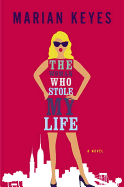
| Publisher: | Viking | |
| Genre: | Fiction, Contemporary Women, Literary | |
| ISBN: | 9780525429258 | |
| Pub Date: | July 2015 | |
| Price: | $27.95 |
| Fiction |
by Marian Keyes
In The Woman Who Stole My Life, Marian Keyes (The Mystery of Mercy Close) delivers a warm and positive--at times hilarious--read about the effects of serious illness.
The story is told by charming and chatty Stella Sweeney--"Age: forty-one and a quarter"--as an account of what happened when she was a 37-year-old beautician, the Irish wife of a "successful but creatively unfulfilled" bathroom designer and mother of two rebellious teenagers. Stella's life was humbly ordinary until a strange illness overtook her, making her paralyzed and mute. The diagnosis, Guillain-Barré syndrome--a rare, yet usually temporary, autoimmune disorder--attacks the nervous system. Though mentally attentive, Stella remained confined to an I.C.U. The only way she could communicate was via blinking, and the only person who understood her was her handsome neurologist, Dr. Mannix Taylor. During her long hospital stay, the two bond and share intimate details about their lives.
After her arduous recovery, an American tabloid publishes a photo of the vice president's wife reading a self-help book called One Blink at a Time--Stella's story, complete with clever, stoic aphorisms she spouted during her ordeal. Stella is surprised to learn it was self-published, behind her back, by dreamy Dr. Taylor. The exposure brings Stella instant international fame and fortune--and the possibility of new love. But at what price?
Keyes depicts the realities of illness for the patient and all involved. Her comic take on Stella's journey--coupled with her distinctive brand of wit--showcases her imagination in top form. --Kathleen Gerard, blogger at Reading Between the Lines
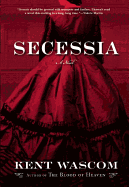
| Publisher: | Grove Press | |
| Genre: | Fiction, Literary | |
| ISBN: | 9780802123619 | |
| Pub Date: | July 2015 | |
| Price: | $26 |
| Fiction |
by Kent Wascom
Set in Civil War-era New Orleans after it has been captured by Union troops, Secessia uses the frayed relationships of its main characters to illustrate the contradictions and lies that constitute the country's self-image. Kent Wascom (The Blood of Heaven) focuses on the gentry of the city, showing how its existence is slowly but surely upended by the new regime. But Secessia isn't interested in trumpeting the supposed racial progress of the North, or waxing nostalgic for Southern culture. Instead, it shows that one brutality was traded for another.
Northern brutality is personified by General Benjamin Butler, a real-life leader in the Union army with the fitting moniker "the beast." Butler comes to New Orleans on a mission to break the city, butting heads with the establishment and instituting draconian laws on the pretext of keeping the peace. The characters in Secessia must reposition themselves in the context of Butler's new rule, leading to dangerous and violent incidents. In the midst of this chaos, young Joseph Woolsack begins his journey into adulthood and finds the glimmers of first love.
Sometimes Wascomb tries too hard with metaphor ("Her lungs are the feet of a Chinese princess"); one wishes he'd scaled back. But his images are vibrant and detailed, as if he has personal experience with a place over a century in the past; his writing is lyrical, and he brings out the sights, smells and textures of the period with brilliance. --Noah Cruickshank, marketing manager, Open Books, Chicago, Ill.
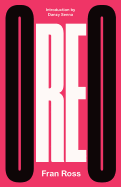
| Publisher: | New Directions | |
| Genre: | General, Fiction, African American | |
| ISBN: | 9780811223225 | |
| Pub Date: | July 2015 | |
| Price: | $14.95 |
| Fiction |
by Fran Ross
In Fran Ross's novel Oreo, a multiracial girl who calls herself Oreo leaves her black maternal family to go in search of her white, Jewish father. The story, a modern version of the tale of Theseus, follows a meandering but hopeful thread, like the Greek hero famously did through the labyrinth to defeat the Minotaur.
First published in 1974, Oreo is a racially charged, feminist story. For this new edition, Danzy Senna writes in the introduction that Ross may have been ahead of her time, her dark comedy and complex characters overshadowed by the sensation that surrounded Alex Haley's publication of Roots. Revived now, when the racial, gender and political landscape is shifting, Oreo masterfully depicts how absurd it is to maintain traditional cultural beliefs.
Like the labyrinth in Greek myth, the novel's trajectory is not forward or backward, but instead is layered, dynamic and always self-referential. Like Theseus, readers are given a line to follow throughout: they can cling to Oreo's distinctive voice. When a gypsy reads Oreo's palm and predicts that she will have three kids with a basketball player, Oreo's reaction is sharp. "This was a stone lie," she thinks. "Amaze the Amazons, perhaps--but live happily ever after with some jive guard and three crumb snatchers? Foul!"
Theseus was promised rewards and glory for slaying the Minotaur. But Oreo's labyrinth is a tangle of gender, racial and social stereotypes. Her father, a deadbeat absentee dad, promises nothing. She makes her way through the labyrinth for herself, no one else. --Josh Potter
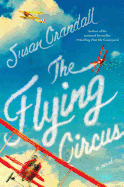
| Publisher: | Gallery Books | |
| Genre: | General, Fiction, Historical, Literary | |
| ISBN: | 9781476772141 | |
| Pub Date: | July 2015 | |
| Price: | $26 |
| Fiction |
by Susan Crandall
In the 1920s, aviation was still a new and risky phenomenon. Daredevil pilots, many recently returned from World War I, drew huge crowds with their "barnstorming" stunts. In her novel The Flying Circus, Susan Crandall traces the journey of a war veteran, a young mechanic and a runaway society girl as they form their own "flying circus" and build an unconventional family.
The narrative centers on orphan Henry Schuler, who must flee his Indiana hometown after being accused of murder. His chance encounters with Charles "Gil" Gilchrist, a troubled aviator, and Cora Rose Haviland, a bold, restless young woman determined to escape her mother's clutches, will change their lives forever. As the trio crisscrosses the Midwest, performing dazzling stunts with Gil's plane and Cora's motorcycle, Henry works hard to keep his new family afloat--and keep his secret well hidden.
Crandall (Whistling Past the Graveyard) brings the 1920s to life, touching on issues such as Prohibition, anti-German sentiment, equality for women and the role of stuntmen (and -women) in Hollywood films. But she has ultimately written a novel about relationships: the deep, complex bonds Henry, Gil and Cora share, and the tangled relationships each of them has left behind.
"Sometimes we're born where we belong and sometimes we have to search to find our place," Henry tells Cora. The Flying Circus is a compelling, big-hearted account of that search, in the air and on land. Readers will happily be swept along for the ride. --Katie Noah Gibson, blogger at Cakes, Tea and Dreams
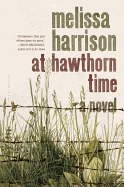
| Publisher: | Bloomsbury | |
| Genre: | Fiction, Literary | |
| ISBN: | 9781620409947 | |
| Pub Date: | July 2015 | |
| Price: | $26 |
| Fiction |
by Melissa Harrison
At Hawthorn Time is a novel that builds slowly. The early chapters center on four strangers who share nothing but a common geography: the small town of Lodeshill in rural England. Howard and Kitty have just moved to the town after raising their family in London; Jamie, a local teenager, has lived there his entire life; and Jack, a migrant worker, has returned to the area to look for farm labor after being released from prison. Though many small-town stories revel in the unexpected ways the lives of strangers can merge and overlap, Melissa Harrison (Clay) takes a different approach: what is most astounding at the outset of her second novel is the sheer amount of time it takes for these characters to encounter each other, despite their living in close proximity.
By keeping these characters separate for so long--their stories do not appear on the same page until at least 100 pages in, and do not truly begin to overlap in any meaningful way for yet another hundred--Harrison brings to the forefront the extremely personal and private ways that we can live as individuals while simultaneously highlighting the impermanence of that individualism. Combined with graceful and delicate language about nature and the English countryside--which could in many ways be called a fifth, unnamed and ever-present character in the novel--At Hawthorn Time is a quiet meditation on the unexpected beauty of both the individual and the community, and the changing landscape in which the two exist. --Kerry McHugh, blogger at Entomology of a Bookworm
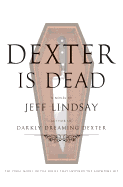
| Publisher: | Doubleday | |
| Genre: | General, Crime, Police Procedural, Fiction, Mystery & Detective, Thrillers | |
| ISBN: | 9780385536530 | |
| Pub Date: | July 2015 | |
| Price: | $24.95 |
| Mystery & Thriller |
by Jeff Lindsay
After seven books and a Showtime spinoff, Jeff Lindsay bids a fitting farewell to his beloved antihero, the witty, food-obsessed forensic blood spatter analyst and sociopathic vigilante, Dexter Morgan. While this last novel is less a nail-biter than a tidying of loose ends (the whodunit being solved midway through), it nevertheless provides fans with thought-provoking and interesting closure on a pop culture icon.
Dexter sits in solitary confinement, having been caught for a gruesome murder that he, ironically, did not commit. His actress-lover and ex-wife are both dead, and his stepdaughter is the victim of a pedophile actor, the true murderer. His coworkers on the force, including his sister Deborah, have turned against him; only fellow forensic analyst Vince Masuoka believes in his innocence. Coming to Dexter's rescue is his presumed dead brother, who hires a high-powered attorney with stolen drug money to defend Dexter against charges brought by crooked Detective Anderson. What follows is an entertaining and sinister cat-and-mouse game among pursuing drug lords, Detective Anderson and the Morgan brothers' killer instincts.
"The point was not to win; you never did," muses Dexter. "Nobody can win a game that ends with everybody dying--always, without exception. No, the real point was to fight back and enjoy the combat."
Like his protagonist's, Lindsay's final adieu isn't an emotional reveal that will leave fans wanting. Rather, the literary jousting stops only when Dexter's final thought has been punctuated with a blood bath worthy of the big screen. --Nancy Powell, freelance writer and technical consultant
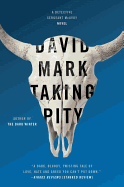
| Publisher: | Blue Rider Press | |
| Genre: | Suspense, Fiction, Thrillers | |
| ISBN: | 9780399168215 | |
| Pub Date: | July 2015 | |
| Price: | $26.95 |
| Mystery & Thriller |
by David Mark
Detective Sergeant Aector McAvoy of Humberside Police returns for David Mark's fourth book in his police procedural series. Despite being on sick leave and separated from his wife and infant daughter after a tragedy in the previous novel, Sorrow Bound, McAvoy is asked to fact-check a 50-year-old case that may finally come to trial.
McAvoy's assignment is meant to be a quiet, low-key job, confirming that evidence and witness statements are secure enough for a likely conviction. But when some details give McAvoy an uneasy feeling, he starts digging, pursuing the investigation further than instructed. What the determined detective uncovers drops him smack in the middle of a current war between two organized crime factions Detective Superintendent Trish Pharaoh is struggling to neutralize.
Taking Pity alternates among many different characters' perspectives, leaving the reader with only partial snapshots of each. In addition, Mark tends to keep information from his readers, even as the characters receive it, like writing only one side of a phone conversation, and not divulging the contents of letters received. These techniques all work to compound the novel's intense suspense.
There are threads that continue throughout the series, so readers familiar with all the books will likely have a firmer grasp on this novel, but Taking Pity can still be thoroughly enjoyed on its own. Fans of gritty, dark crime who are unfamiliar with this series should dive in immediately and be prepared to become addicted. --Jen Forbus of Jen's Book Thoughts
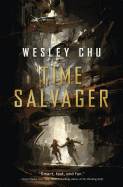
| Publisher: | Tor | |
| Genre: | Fiction, Science Fiction, Action & Adventure, Time Travel | |
| ISBN: | 9780765377180 | |
| Pub Date: | July 2015 | |
| Price: | $25.99 |
| Starred | Science Fiction & Fantasy |
by Wesley Chu
James Griffin-Mars is a chronman, sent back in time from an ecologically ruined future Earth to salvage what technology he can to aid humanity's survival on the planet.
The job is so harrowing that few chronmen make it to old age--the past is full of dangers. James is a rarity, a time traveler past his prime. His experience makes him valuable; his alcoholism and burnout makes him a liability.
One final mission calls into question all his assumptions about the job, his employer and the corporations that foot the bill. The Time Laws, assumed to be for the safety of both chronmen and the timestream, may not be immutable laws of the physical universe after all, as James finds out when he breaks the cardinal rule and brings Elise Kim, a young environmental scientist from the past, into the present.
The pair end up collaborating with an undeveloped yet intelligent tribe of people who live in the wild lands outside of heavily guarded cities. The group hopes to build a better life and perhaps even find the key to restoring the Earth to its former unpolluted state, with the help of another woman from the past and the inventor of time travel, Grace Priestly.
Time Salvager by Wesley Chu (The Lives of Tao) is a gripping story set in an all-too-imaginable far future with time travel a mundane fact of human existence. It's a depiction of the haves, the have-nots and the soulless corporations who rule over them all from space habitats far above the doomed planet. --Rob LeFebvre, freelance writer and editor
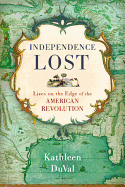
| Publisher: | Random House | |
| Genre: | United States, Modern, History, Revolutionary War, 18th Century, Colonial Period | |
| ISBN: | 9781400068951 | |
| Pub Date: | July 2015 | |
| Price: | $28 |
| History |
by Kathleen DuVal
In Independence Lost: Lives on the Edge of the American Revolution, historian Kathleen DuVal (The Native Ground) reminds us that the revolution was part of a larger global conflict involving France and Spain, and that Britain had 13 other colonies in North America and the Caribbean that were also affected by the war.
West Florida, which included parts of what is now Florida, Mississippi, Alabama and Louisiana, had only recently become a British colony--part of the redistribution of imperial territories at the end of the Seven Years War--when the Continental Congress declared independence from Britain. Located on the border between the British and Spanish empires, and a distant frontier for both, it was home to former French and Spanish citizens, British loyalists fleeing the disruptions of the revolution and well-organized Indian nations with their own agendas. The possibility of a Spanish invasion was real.
DuVal considers how eight very different colonists--a second-generation African slave, a young Cajun with a deep-seated hatred of the British, leaders of the Creek and Chickasaw tribes and two British couples who chose different sides in the conflict--responded to the dangers and opportunities that the revolution brought to their doorsteps and the impact of those choices. While each of these characters stands in for a larger population, the complicated calculus of self-identity, self-interest and personal history that they use to make decisions about the world around them makes it clear that for them, revolution and politics were always personal. --Pamela Toler, blogging at History in the Margins
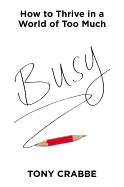
| Publisher: | Grand Central | |
| Genre: | Self-Management, Psychology, Self-Help, Personality, Business & Economics, Time Management | |
| ISBN: | 9781455532988 | |
| Pub Date: | July 2015 | |
| Price: | $28 |
| Starred | Psychology & Self-Help |
by Tony Crabbe
"Busy is a terrible brand," advises business psychologist Tony Crabbe in his profoundly motivational first book. In a world where people are continually inundated with more information, more demands and more opportunities, Crabbe says, "We should be consciously and deliberately choosing not to do things, killing off options in our lives and work to allow a greater focus on fewer things. Instead of choosing more, we should choose less, instead of gray, we should choose color." Busy proposes a realistic guide to undertaking less in order achieve a calmer, slower, more vibrantly fulfilling life.
The world has changed dramatically since the Industrial Age, but people's strategies for coping and succeeding have not. Busy functions as a personal workbook, encouraging the necessary adaptations for the Information Age. Crabbe advocates focusing on attention, core values, innovation and reconnecting while he discourages popular ideas such as time management and multitasking.
Presented in three sections--Mastery, Differentiation and Engagement--Busy offers wisdom from recognized studies, highly successful organizations and other research, as well as Crabbe's own experiences and anecdotes. In addition to self-examination exercises throughout, including identifying core values and formulating a personal brand, each chapter ends with a summation of the big messages as well as constructive activities readers can do and experiment with in order to practice the concepts in their own lives.
Anyone who claims, "I'm too busy," can benefit from Crabbe's insights. Practical, concise and accessible, Busy is a book well worth making time for. --Jen Forbus of Jen's Book Thoughts
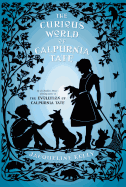
| Publisher: | Holt | |
| Genre: | Multigenerational, United States - 19th Century, Juvenile Fiction, Family, Historical | |
| ISBN: | 9780805097443 | |
| Pub Date: | July 2015 | |
| Price: | $16.99 |
| Starred | Children's & Young Adult |
by Jacqueline Kelly
This follow-up to the Newbery Honor book The Evolution of Calpurnia Tate may just top Jacqueline Kelly's debut.
Here narrator Callie Vee turns 13, and her fans will happily fall back into the turn-of-the-20th-century Texas landscape and quickly recognize Kelly's exploration of gender roles and sibling relationships. Smart, strong-willed Callie questions why being a girl should dictate her interests, her worth and her goals in life. She knows that her brothers are valued more just for being boys (literally--they get $10 gold pieces; she gets $5). But thanks to Granddaddy's mentorship, her focus on scientific discovery and a few big events, Callie continues to explore who she is and the world around her. When she notices changing patterns in nature, she builds a barometer that predicts a hurricane. Callie's younger brother, Travis, rescues strays of all kinds, providing a constant stream of animals (including an armadillo and a half dog–half coyote) for them to care for secretly (their mother would not approve). Some new relationships help her figure out where she fits in as a person and a scientist: Aggie, a cousin who barely talks to her but now shares Callie's room as a result of the 1900 hurricane in Galveston, and Dr. Pritzker, the town's new veterinarian, to whom Callie becomes assistant.
Callie's delightful voice tells a multilayered story with humor and insight. The book moves at a steady pace, as readers watch Callie grow confident and mature through her adventures with science and society. --Susannah Richards, associate professor, Eastern Connecticut State University

| Publisher: | Harper | |
| Genre: | Girls & Women, New Baby, Juvenile Fiction, Family, Siblings | |
| ISBN: | 9780062302038 | |
| Pub Date: | June 2015 | |
| Price: | $17.99 |
| Children's & Young Adult |
by Amy Krouse Rosenthal, illust. by Peter H. Reynolds
A girl in pig tails and beige-and-yellow striped pants is happy (mostly) to have a baby sibling in this book that makes a great baby gift for an older sibling.
With a minimal rhyming text and a limited palette, the team behind Plant a Kiss zeroes in on a big sister's reaction to learning about a baby coming, and then her embrace of the new addition. "The big news is this:/ Little Miss/ will be a big sis." Reynolds shows Little Miss actively listening to her mother (who points to her stomach) as a thought balloon depicting a baby appears over her head. When the infant comes home, the big sister helps, carting a wagon full of bottles, diapers, book and Teddy bear. She stays near the baby's crib and helps at mealtime (Reynolds shows the baby flicking food at Little Miss: "Help with bib. (What a sib!)"). As the pages progress, the baby (who's never assigned a gender and wears yellow) grows. The older sister uses a puppet to entertain the baby, who can now sit up. A four-part vignette depicts the baby's first steps ("Crawling, crawling. Falling, falling"), then running through the house, a tad older, a few pages later. Even when her younger sibling "sometimes takes toys. And sometimes annoys," the bond between the two remains constant.
Rosenthal and Reynolds anchor the activities in everyday life so all children can see themselves, on a swing, making forts, playing clapping games and tag. The story ends at bedtime, with the two siblings sharing a room and a bunk bed. --Jennifer M. Brown, children's editor, Shelf Awareness
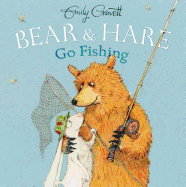
| Publisher: | Simon & Schuster | |
| Genre: | Animals, Friendship, Social Issues, Juvenile Fiction, Rabbits, Bears | |
| ISBN: | 9781481422895 | |
| Pub Date: | July 2015 | |
| Price: | $15.99 |
| Children's & Young Adult |
by Emily Gravett
Like any great picture book, the words do not tell the whole story in Emily Gravett's (Orange Pear Apple Bear) portrait of a friendship.
"Bear and Hare are going fishing," the story begins. The words appear on a pond-colored backdrop on the left, as Bear places a fishing hat on Hare's head on the right-hand page, with its white background. "Bear loves fishing!" and no wonder! Hare does all the work, lugging an umbrella, fishing net, tackle basket and cooler while Bear carries only the fishing pole. When Bear throws his line, he's often surprised. He hooks Hare's hat, nets a frog and lands a roller skate in the middle of the picnic Hare has set out so carefully. Gravett accentuates the humor through Hare's expressions. Hare looks so content with the formidable picnic spread, with a slight smile and ears straight up, then registers shock as the roller skate lands in the layer cake. Gravette uses the pond-colored page to excellent effect: Bear crosses the book's gutter--leaning out from a white background--to hold his fishing net over the pond, and Gravett fades out the portion that would be underwater. She also gives a hint of what's waiting as the finale. Something lurks in the deep. (Hare catches a fish, but not in any usual way.)
Bear's golden fur makes a nice complement to the teal-tinted pond, and Hare's cream-colored fur underscores a second-fiddle role--until Hare saves the day. --Jennifer M. Brown, children's editor, Shelf Awareness